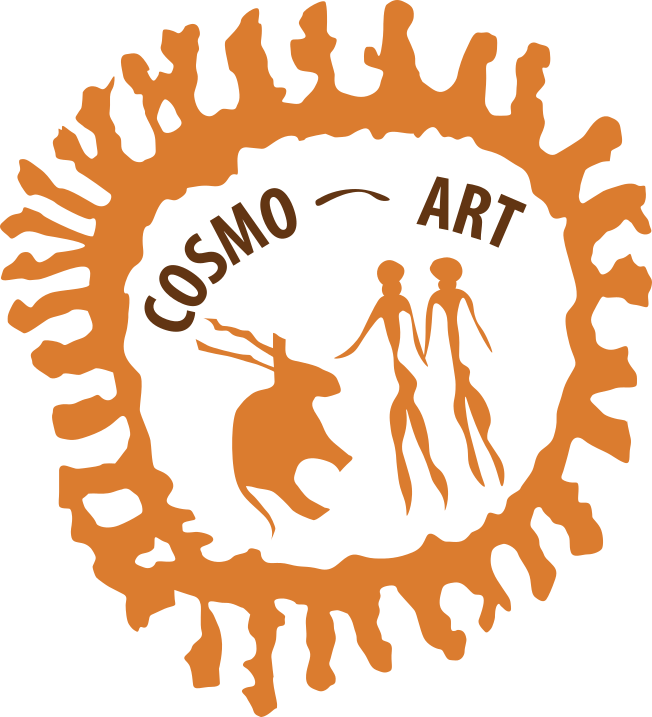Training
Training and capacity building are also a critical part of COSMO-ART activities
The research actions planned in COSMO-ART are based on the realisation of several student works, both in France and in Southern Africa, with Honours, Masters, PhD and post-doctoral works. In turn, the supervision of these student works by various members of the project is as much a period of training by and in research for students who may tomorrow be in charge of the management and implementation of heritage policies, or who will continue research on this heritage input.
Leïla Baracchini

Leïla Baracchini received her PhD in social anthropology and art theory (Quai Branly Thesis Price 2019) from the EHESS-Paris and the University of Neuchâtel in 2019. Her research focuses on the politics of representation and the processes of commodification and patrimonialisation in indigenous contexts. She explores these topics principally in Botswana, South Africa and in the French Lesser Antilles.
Postdoc (Éco-Anthropologie / EDYTEM)
Relationship between San local communities and rock art heritage sites
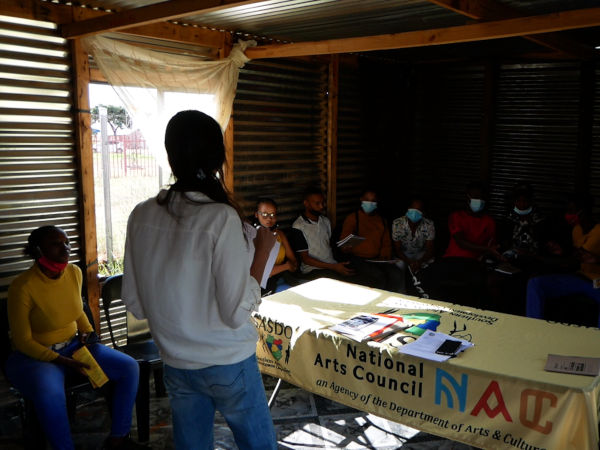
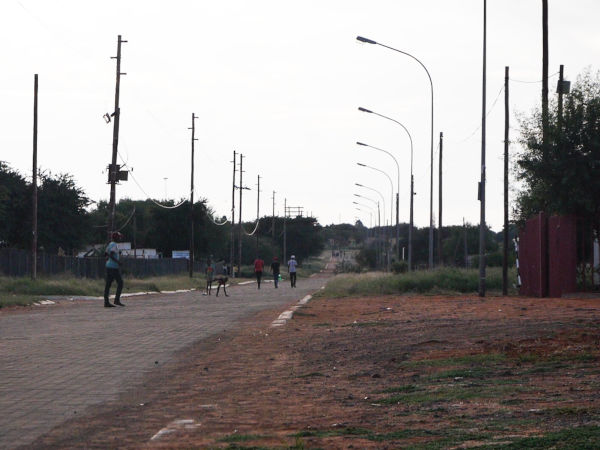
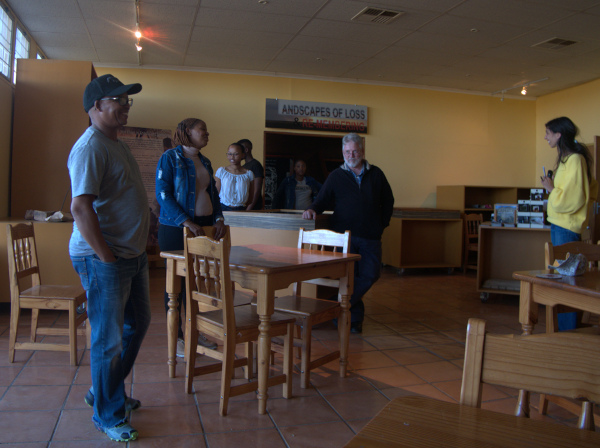
Leïla did her post-doctoral research at the Éco-Anthropologie Laboratory (UMR 7206) at the Muséum National d’Histoire Naturelle (Paris), studying the relationship between local San communities and rock art sites.
In the post-colonial context of southern Africa, rock art sites produced by KhoiSan and Bantu-speaking populations are situated at the intersection of different registers. For example, political registers, with a process of selection of rock art sites as a high place of the South African nation; cultural and identity registers, with the recognition of the particularities of social groups in the background; economic registers, with issues of tourism and local economic benefits, and so on. As a result, rock art sites combine a variety of potential, sometimes competing or conflicting values. Although current management plans attempt to take into account the diversity of values attached to rock art, there is still a gap between intention and reality on the ground. This is partly due to the difficulty of understanding multiple, contextual, conflicting and ever-changing values and the lack of a sound holistic and integrated methodological framework to do so. COSMO-ART proposes a new way of approaching the uses and perceptions of rock art sites with the aim of defining convergences between actors located at different levels in a sustainable management perspective.
Within this multicultural context, and taking into account the cosmopolitan framework of the COSMO-ART programme, Leïla’s postdoctoral research focuses on the rock art site of Wildebeest Kuil, near Platfontein and Kimberley, South Africa. The aim is to investigate the relationships between the rock art site (and more broadly the landscape) and the surrounding population as a whole (including the Tswana, !Xun and Khwe socio-cultural groups). The focus is on the appropriation of these sites by the different populations. How do different people relate to this rock art site? Does this site have meaning for different people? And if so, what meanings? And if not, what are the landscape elements that these people relate to? Methodologically, after initial field observations and the study of the available literature, the question of values and appropriation was addressed through the images produced by the people interviewed and the discourses expressed on the images produced (photovoice process). This approach was complemented by field observations and semi-directive interviews with key stakeholders. Finally, with the support of local stakeholders, a photo exhibition was prepared with the collected material (photographs and interviews). The exhibition shows, from the point of view of the local population, the places with which they are connected.
Leïla’s scientific production:
- What does a photovoice project contribute to the analysis of heritage management ? A critical analysis of the « Places in Me » project with the Khwe and !Xun communities in Platfontein, ASAPA 2024 biennal meeting, Maseru (Lesotho), 24-28 June 2024
- Partager des images, repenser le patrimoine rupestre : un projet de photographie participative avec des populations san d’Afrique du Sud, 1st Young Researcher’s Day Participative Cultural Research, Particip-Arc, Paris (France), 16 November 2022
- « Giving » voice, sharing pictures and rethinking heritage. A photovoice project with displaced San communities (Kimberley, South Africa), Annual Meetings of the Swiss Anthropological Association (SAA), “Give and Take – Anthropology as Exchange”, Neuchâtel (Switzerland), November 10-12, 2022
- De réfugiés à propriétaires de site archéologique. Quelle relation au patrimoine rupestre pour les !Xun et les Khwe de Platfontein (Kimberley, Afrique du Sud)?, 7e Rencontre des études africaines (REAF), Toulouse (France), 28 June – 1 July 2022.
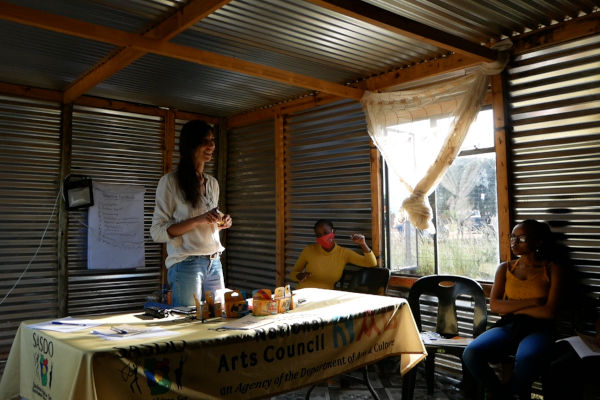
Fieldwork: First contact and start of the photovoice project
(South Africa: 15 March – 29 April 2022)
Leïla’s initial fieldwork lasted seven weeks and allowed her to contact and interview key local stakeholders, visit some of the archaeological sites around Platfontein (and Wildebeest Kuil in particular), gather information from the Africana Library and Sol Plaatje University, and get down to the nitty-gritty of her postdoctoral research: starting with the photovoice workshops at Platfontein.
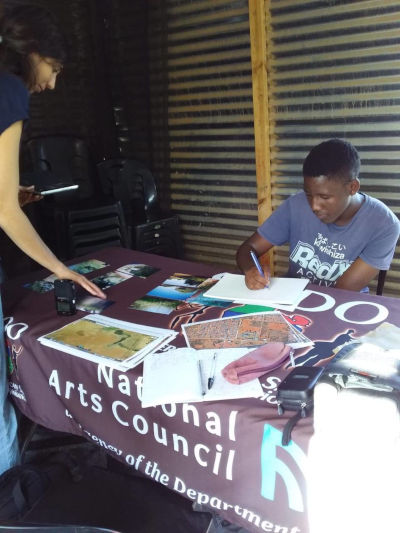
Fieldwork: Photovoice project
(South Africa: 1 August – 3 September 2022)
The five weeks spent in the Kimberley area gave rise to a second series of photovoice workshops in Platfontein. It started with a workshop around the question: « What does heritage mean to me? » The aim was to get participants to explore the ideas that come spontaneously to mind when talking about heritage. This was followed by a series of individual interviews with Platfontein’s political representatives and elders who had been involved with Wildebeest Kuil (as artists, storytellers or craftspeople).
Several discussions regarding the planning of the exhibition “Places in Me” and its technical components also took place with the partners of the project: SANCD, SASDO, the McGregor Museum and the Department of Heritage Studies of the University of Sol Plaatje.
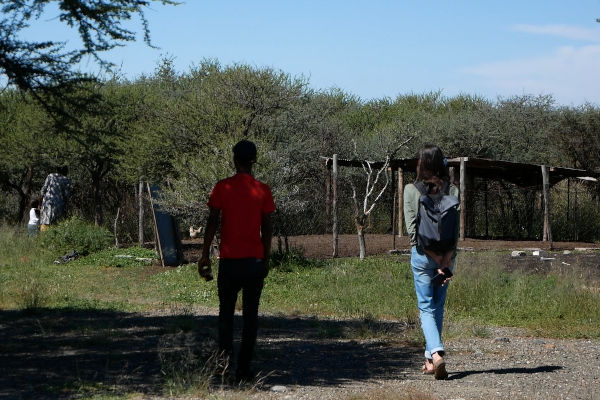
Fieldwork: Finalising the photovoice project
(South Africa: 21 January – 14 Frebuary 2023)
For this third and last fieldwork session, Leïla’s met all the participants in the photovoice project. Indeed, to have the photographs and texts selected for the exhibition “Places in Me” validated by the project participants. Leïla had indeed been busy with the transcription of the interviews with the authors of the photographs and the selection of excerpts for the exhibition.
These weeks in Kimberley were also used to meet with the different partners of the project. With six months to go before the opening, there was still a lot to organise between the different partners to make this event a success.
Juliette Barthélemy

Juliette’s background is eclectic: Law and Political Science combined with Art History. She is now doing a Masters degree in Archaeology: Arts, Societies and Prehistoric and Protohistoric Environments (Europe, Africa) at the Université Jean Jaurès in Toulouse.
Master 1, Archaeology: Arts, Societies and Prehistoric and Protohistoric Environments (Europe, Africa), Université Jean Jaurès, Toulouse
Epistemological approach to the study of rock art sites in the Karoo (South Africa)
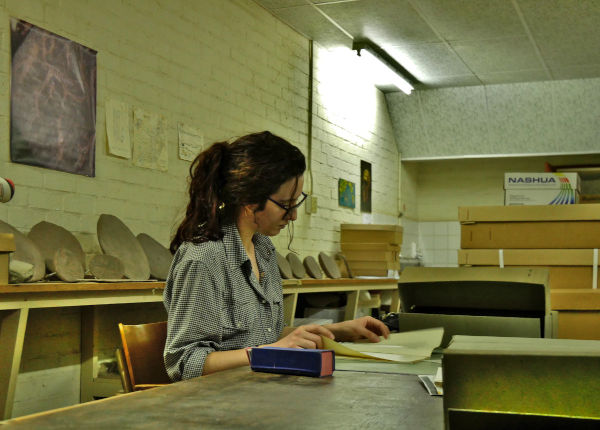
For her research Juliette is jointly supervised by Camille Bourdier and Yann Potin (Université Sorbonne Paris Nord) to apply an epistemological approach to the study of rock art sites in the Karoo (South Africa) over the last century. To this end, Juliette is mainly focusing on three sites: Wonderwerk Cave, Wildebeest Kuil and Driekopseiland. For each site, she is considering three major parameters in the creation of knowledge: the people involved in the research and their training; the issues and objectives considered in rock art archaeology; and finally, the methods: how they were developed and what the actual research practices were.
This epistemological approach consists of analysing the scientific knowledge produced on Karoo rock art over the last century, in order to identify any biases and gaps. This research will thus contribute to the interdisciplinary discussion on the heterogeneity of the knowledge built up around rock art sites in this region and on the various values that have been attributed to them. It will also open up avenues for future research into regional rock art.
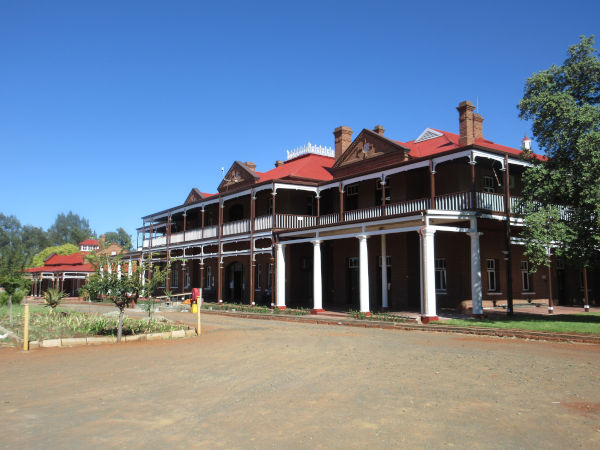
Fieldwork: Archival research
(South Africa: 13 March – 26 March 2024)
Juliette stayed two weeks in Kimberley to carry out archival work at the McGregor Museum and the Africana Library.
Lucas Bruchet

Lucas joined COSMO-ART as an intern as part of the second year of his University Bachelor of Technology degree in Multimedia and Internet at the University Savoie Mont Blanc.
From May to August 2023, he has worked as a graphic designer and video artist on the photographic exhibition « Places in Me ». The exhibition opened at the beginning of July 2023, so his internship allowed him to work on the finalisation of the exhibition and then to accompany the research team to the opening to document the dynamics between the different actors and to produce a documentary.
Internship (EDYTEM)
Documenting the making of the Places in Me photovoice exhibition

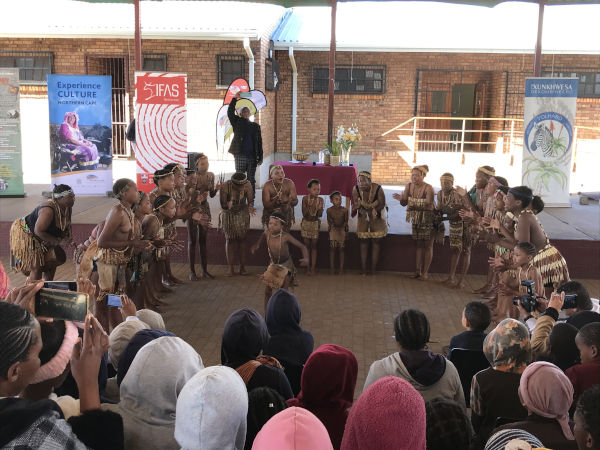

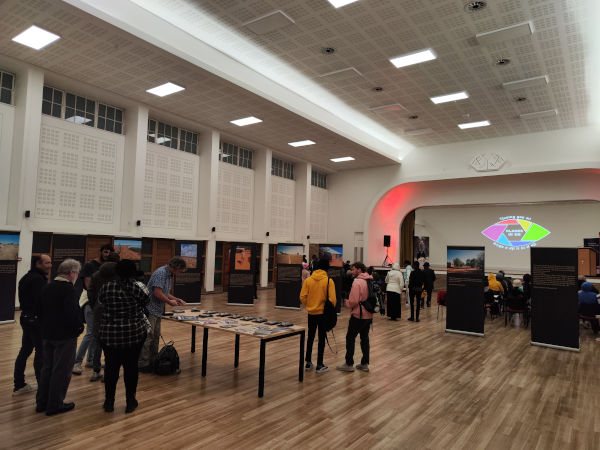
During the first 2 months of his internship, his graphic design skills were put to good use. During this time he was responsible for a number of aspects of the exhibition: (i) the layout of the 21 roll-up banners that make up the exhibition, (ii) the production of an exhibition booklet in five languages based on the content of the roll-up banners, (iii) the editing of a film consisting of photographs and recordings of quotations in the two community languages spoken in Platfontein (Khwedam and !Xuntali), (iv) the creation of the visual identity for the exhibition and the documents used to communicate about the event (posters, banners, invitation cards, etc.).
From mid-June, his skills as a video maker came to the fore. The aim of his internship was also to produce a documentary of the various stages and challenges of the exhibition against the backdrop of the opening.
Accompanying the COSMO-ART team in the field, the two weeks he spent in Kimberley allowed him to cover the installation of the exhibition and the various events surrounding its inauguration (meetings, openings, workshop, discussions with communities and researchers). At the same time, he co-wrote the documentary with the project’s researchers. On his return to France, he spent the last three weeks of his internship editing the documentary.
Lucas production:
- Documentary on the creation of the exhibition « Places in Me »
Zola Daniels

Zola obtained her Honours degree in Archaeology from Sol Plaatje University in 2024. Her dissertation was titled: A Gendered Reading of Southern African Rock Art at Giant’s Castle, UKhahlamba-Drakensberg, supervised by Dr Lourenço Pinto. Where she looked at the absence and the role of women in rock art and in San belief systems.
She is currently doing her internship at the KwaZulu Natal Museum, South Africa. She is also doing her Masters in Archaeology at Sol Plaatje University, dissertation titled: Archaeology and Rock Art Education: A Cross-Cultural Examination of Curriculum Integration in France and South Africa from 1994 till present, supervised by Dr Lourenço Pinto and Professor Amanda Esterhuysen.
Masters, Archaeology, Sol Plaatje University
Archaeology and Rock Art Education: A Cross-Cultural Examination of Curriculum Integration in France and South Africa from 1994 till present

Zola will analyse how rock art has been incorporated in the school curriculum.
Anaïs Empereur-Buisson
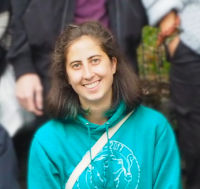
Anaïs joined the Cosmo-Art project as part of her Master’s degree in Archaeology at the University of Bordeaux (with a speciality in Prehistory, Geoarchaeology and Archaeozoology) and devoted her research project to the study of rock-art conservation in Wonderwerk Cave (Northern Cape, South Africa).
Master 2, Archaeology & Sciences for Archaeology, Université de Bordeaux
Conservation of the Wonderwerk Cave paintings (Northern Cape, South Africa)

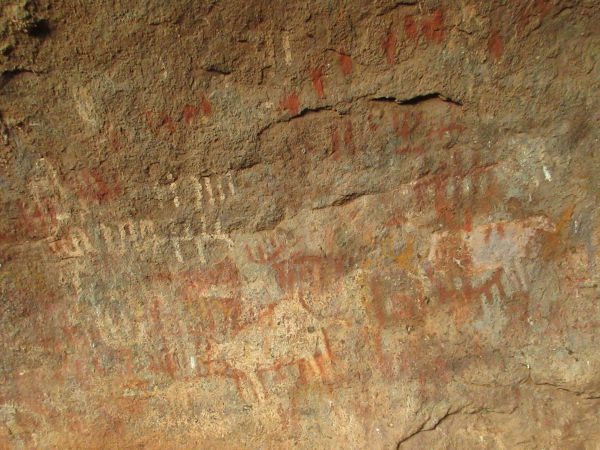
Proposed by the ANR Cosmo-Art, the subject is addressing the question of the conservation of Wonderwerk Cave’s paintings. Indeed, very few studies focused on this point, partly because the paintings are pretty much altered by graffiti. Yet, a conservation study could bring new elements to discuss the authenticity of some figures, and is an indispensable prerequisite to eventually get meaning out of them.
In order to answer this conservation issue, we intend on establishing a condition report of the paintings, by identifying and mapping the different conservation states and weathering processes. This should enable us to discuss some elements, such as the original state of the paintings, the authenticity of some figures, and maybe to propose a stratigraphy for the paintings.
To do so, we will do a multi-scale taphonomic study, from the massif to the wall, and then produce a detailed relevé of a chosen control area. For this, photography and image enhancement will be necessary. Monitoring of the cave and component analysis will be used in order to identify the different weathering processes.
The project is a collaboration with the McGregor Museum and Sol Plaatje University.
Anaïs’ scientific communications
- Conservation of the Wonderwerk Cave paintings (Northern Cape, South Africa), 5th Humanities Seminar Series Online Talk, Sol Plaatje University, South Africa, 6 December 2023.


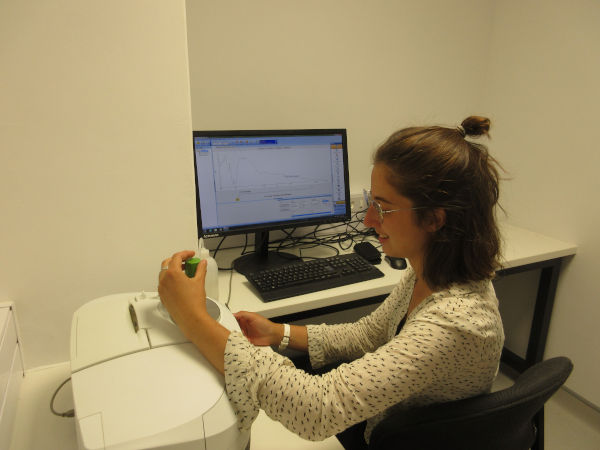
Fieldwork: Study of the conservation of Wonderwerk Cave
(South Africa: 15 February – 22 March 2023)
Anaïs stayed about nine weeks in South Africa to carry out her research project at Wonderwerk Cave. During her stay she was hosted by the Sol Plaatje University.
She spent first two weeks in Kimberley to search paper and photographic archives kept at the McGregor Museum and its satellite, the Duggan-Cronin Gallery. She also met and interviewed several people who could provide her with insights into the history of the cave, the conservation interventions that took place there and the management and operation of this public site.
Anaïs then moved to a place closer to the cave to do her fieldwork. She identified the factors affecting the conservation of the paintings and monitored several of them, selected test areas where she focused her recording of the paintings, there alterations and previous conservation intervention. She also collected some samples of deposits and alteration products that she analysis in the Archaeology laboratory at Sol Plaatje University.
Shanty Fisher

After obtaining an honours degree from Sol Plaatje University with specialisation in Heritage studies, Shanty enrolled in the International International Erasmus Mundus Master in Quaternary and Prehistory at the Instituto Politécnico de Tomar (Portugal). For her Master’s research project she studied, as part of COSMO-ART, the conservation and management of rock art sites in Namibia and South Africa.
International Erasmus Mundus Master in Quaternary and Prehistory, Instituto Politécnico de Tomar
Understanding the management of rock art sites and stakeholders engagements in South Africa and Namibia: Wildebeest Kuil, Kimberley and Spitzkoppe Namibia

For her research project, Shanty’s assessed the engagement of stakeholders in the management of rock art sites in Southern Africa, through an analytical comparative study of the different site management plans of two relevant prehistoric rock art sites: Wildebeest Kuil rock art site in the Northern Cape (South Africa) and the Spitzkoppe rock art in the Erongo Mountains (Namibia). This included understanding site management and stakeholder engagement. Shanty analysed data from grey literature, secondary sources, community engagement in the field and site documentation through thematic content analysis. The key discussion point of the study looked at the relevance of community engagement to the different dimensions of the management of these sites. This included consideration of the various stakeholders such as the national heritage councils, various institutions concerned with heritage and rock art sites in Southern Africa, as well as local communities. The results of the research and data collection showed that the involvement of marginalised and low status communities is indeed important for the management of the sites studied.
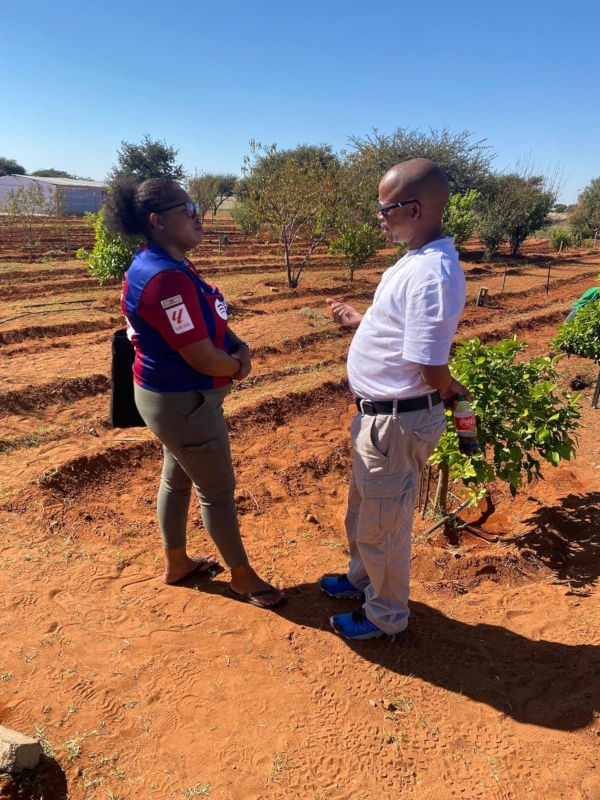
Fieldwork: Involvement of local communities in the management of rock art sites
(Namibia & South Africa: 4 April – 4 June 2024)
Shanty conducted her fieldwork in both Namibia and South Africa to compare how local communities are actually involved in the management of two rock art sites studied by COSMO-ART: Spitzkoppe in Namibia and Wildebeest Kuil in South Africa. In Namibia (4-19 April), after documenting the modes of tourism development of the rock art sites in the Spitzkoppe massif, Shanty interviewed several key local and institutional stakeholders. In South Africa (21 April – 4 May), as the site had already been documented by researchers from the COSMO-ART team, Shanty focused on interviews with members of the two Khwe and !Xun communities in Platfontein. She then used the data collected in the field to analyse and compare the situation at the two rock art sites.
Curtis Jeaven
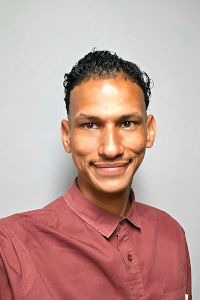
With a background in heritage, archaeology and history, Curtis is specialising in heritage studies. Having completed his Honours thesis on the perception of the photovoice exhibition « Places in Me » by local communities, he has now enrolled on a Masters programme at Sol Plaatje University and is researching the presentation of rock art sites in the uKhahlamba Drakensberg Park (South Africa) and the Vézère Valley (France).
Honours, Heritage Studies, Sol Plaatje University
An Explorative Study of Participants’ Perceptions in the « Places in Me » Photovoice Exhibition, in Platfontein, Northern Cape
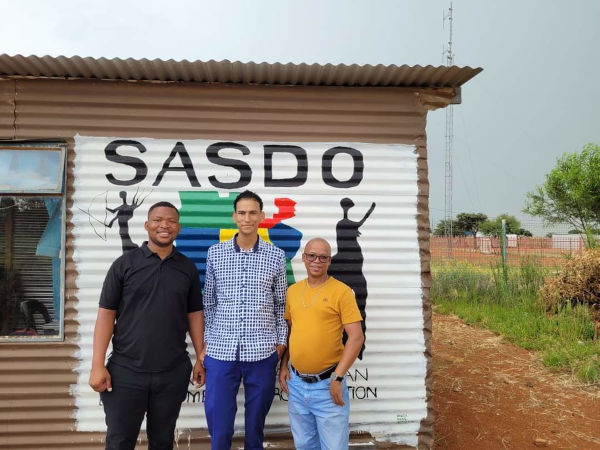
From late 2022 until early July 2023, I observed the work of Cosmo-Art, accompanying Dr Leïla Baracchini and Dr Stéphane Hoerlé to Platfontein as they prepared for the « Places in Me » photographic workshop. During this time, I developed my honours research proposal, which focused on analysing the outcomes of the exhibition.
Curtis’ scientific communications:
- An explorative study of participants’ perceptions in the ‘Places in Me’ photovoice exhibition, in Platfontein, Northern Cape, ASAPA 2024 biennal meeting, 24-28 June 2024, Maseru (Lesotho)
Masters, Heritage Studies, Sol Plaatje University
Rock art presentation and perception: A comparative analysis between uKhahlamba Drakensberg Park, South Africa and the Vézère Valley, France

This research seeks to counter the past narratives by comparing the uKhahlamba Drakensberg Park (UDP) with the Vézère Valley, one of the most developed rock art regions in the world. The comparison seeks to understand how site presentation can be improved in the UDP, with the ultimate aim of providing recommendations that can improve the presentation of rock art and providing recommendations that can improve the rock art as a tourist attraction.
Curtis envisions to conclude his master’s dissertation in October 2025.
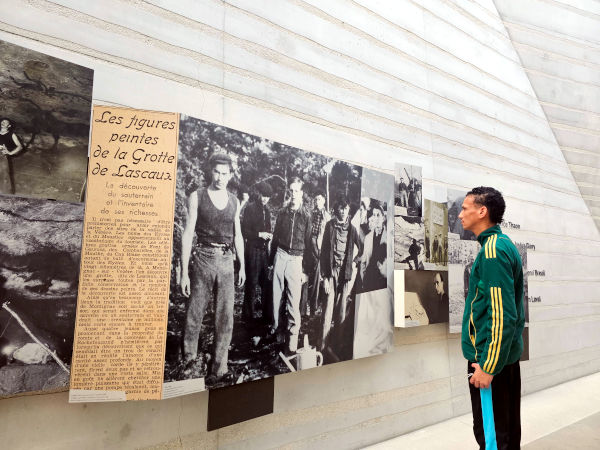
Fieldwork: Presenting French rock art to the public
(France: 28 October 2024 – 25 February 2025)
After arriving in France on 28 October 2024, Curtis began a four-month mobility research period (with the support of the French Embassy in South Africa, Lesotho and Malawi through the Mobilités Croisées programme from the Ministère de l’Europe et des Affaires étrangères). Curtis visited famous sites such La Mouthe, Font-de-Gaume, Combarelles, Cap Blanc Rock Art Shelter and Rouffignac Cave. In addition he visited interpretation centers and museums: Lascaux II and Lascaux IV, the Prehistory Interpretation Center and the National Museum of Prehistory in Les Eyzies. During the visits, Curits conducted observations and interviewed tour guides to analyse how rock art is presented in the Vézère Valley.
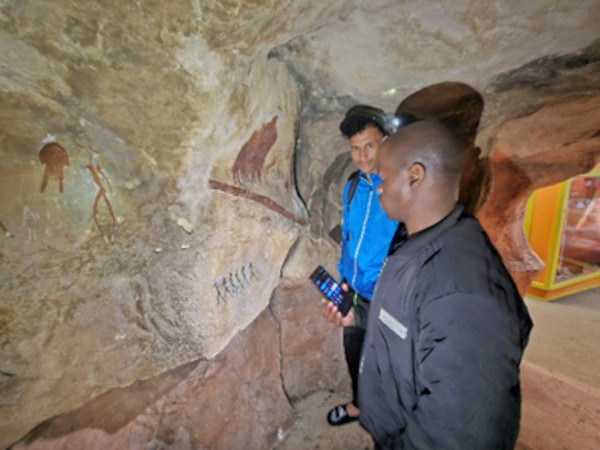
Fieldwork: Presenting rock art in the uKhahlamba Drakensberg Park
(South Africa: 11 April – 3 May 2025)
Over the course of three weeks, Curtis undertook a research trip to the uKhahlamba Drakensberg Park (South Africa), investigating how rock art is presented to the public. This took him all over the KwaZulu-Natal Drakensberg, from Underberg in the southern Drakensberg to the Royal Natal National Park in the north. It was an opportunity to visit many rock art sites open to visitors, including privately owned and publicly operated sites, as well as several interpretation centres and museums, such as the KwaZulu-Natal Museum in Pietermaritzburg and to interview a wide range of local guides.
Antoine Latarge
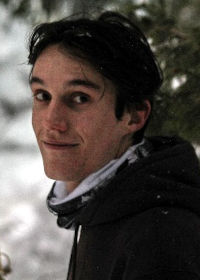
After obtaining a bachelor in Geography and political science in Geneva in 2022, Antoine joined the University of Savoie Mont-Blanc for a Master in Geography and Mountains, which he received in 2024. He is currently carrying out doctoral research after an internship at EDYTEM that involved a fieldwork within the COSMO-ART project.
Master 2, Geography & Mountains, Université Savoie Mont Blanc
Social and spatial organisation of small-scale gemstone mining in Namibia

Antoine’s internship at Edytem consisted of five weeks of fieldwork in Namibia and the writing of a scientific article based on the data collected in the field and the reading of a corpus of various documents (academic, media, grey literature, etc.),
grey literature, etc.). This internship was at the intersection of two research projects: COSMO-ART and GeoExTour. In fact, the fieldwork in which he took part focused on the tourist promotion of rock art sites and on the small-scale mining activities that coexist with some of these sites and could threaten them.
Co-authored with Hugo Quemin, Kaarina Efraim, Marie Forget and Melanie Duval, the paper Antoine had to write as part of his internship examines the social and spatial organisation of small-scale gemstone mining in Namibia. It focuses on the stakeholder dynamics, power relations and precarious conditions faced by miners. It sheds light on an activity that is largely under-researched in the field, yet represents the livelihood on which many Namibians depend. It is based on observations – sometimes participant – and interviews in two Namibian small-scale mining hotspots: Xoboxobos and Tubusis, and around the Brandberg. Entitled Mining the Desert Margins: Exploring the Territorial and Organisational Dynamics of Artisanal Mining in Namibia, the paper aims to provide a comprehensive overview of small-scale mining in Namibia and to pave the way for future research in the this field, opening up new dimensions and perspectives.
Antoine’s scientific communications:
- « We just need to locate the geopark ». Analysis of the role of mining activity within a protected area (Gondwanaland Geopark project, Namibia), Underground esources under pressure: protection and extraction in mountain areas, Université Savoie Mont-Blanc, Le-Bourget-du-Lac (France), October 10th, 2024.

Fieldwork: Studying the Gondwanaland Geopark project and small-scale mining in Namibia
(Namibia: 29 April – 2 June 2024)
Antoine spent five weeks in the field on this occasion, divided into two distinct periods. During the first half, he joined Mélanie Duval, Marie Forget and Hugo Quemin on a joint research mission in the Kunene and Erongo regions. With the team, he collected data on tourism at rock art sites (Twyfelfontein) and potential geosites (petrified forest, organ pipes…), on local participation in the Geopark initiative and on artisanal mining. He then continued his research in Windhoek, Swakopmund and Keetmanshoop, interviewing people involved in the geopark project management team and institutions affected by mining activities, both small and large.
PhD, Geography, Cultures – Societies – Territories, Université Savoie Mont Blanc
Mountain protected areas in Southern Africa facing transitional mineral extraction projects: decarbonization processes and socio-environmental controversies

This research focuses on the consequences of the energy transition for protected areas in southern Africa. In order to meet the demand for metals (lithium, uranium, copper…) to replace fossil fuels with « low carbon » energies, huge mining projects are being developed, mainly in countries of the southern hemisphere. This dynamic, legitimised by a Western political construction of transition on the one hand and economic opportunities on the other, is threatening some protected areas in this region. In fact, mining activities sometimes take place close to or overlap with protected areas, leading to a contradictory coexistence or even to their declassification. These areas may be protected because of their richness and fragility in terms of biodiversity, but also for cultural reasons, such as some rock art sites. This work therefore aims to question the neo-colonial relations between the countries of the North and the South, perpetuated by the transition, as it is currently shaped by the former colonial powers.
At this stage, the main sites to be considered have yet to be specified, but the Namibian, Zimbabwean and South African contexts have already been identified as very interesting for carrying out this research. The selected case studies will examine how the transition imperative upsets the stakeholder system and power relations in conflicts over a mining project competing with the conservation objectives of an area. The legitimisation strategies and discourses will also be examined for these case studies.
Hugo Quemin
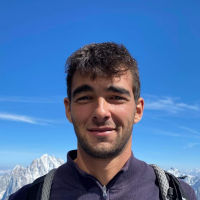
After his graduation from a BTS (HND) in Tourism in 2016, Hugo, moved to the Université Savoie Mont Blanc, where he obtained a degree in geography and started a Master’s program in Geography & Mountains and did his research projects with COSMO-ART. He is now doing is doctoral research, still within the COSMO-ART project.
Master 1, Geography & Mountains, Université Savoie Mont Blanc
Gazes on heritagity. The tourism construction of a rock art site in the Kimberley region (South Africa): genesis, issues and limits of a community-based approach to management and reflections on the socio-political issues of archaeology
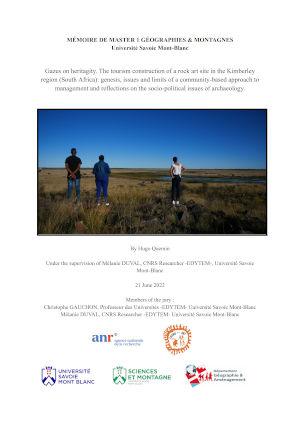
This research, which follows three months of fieldwork, is articulated on the basis of an observation – the Wildebeest Kuil rock art site (Northern Cape, South Africa) is rarely visited – and on the question: what contemporary issues revolve around the site? The construction of an interpretive centre on the edge of Wildebeest Kuil in 2001 was undertaken to provide economic and cultural support to two San communities displaced and resettled at the same time near the site. Supported by new South African heritage management rules in 1999 and with a view to integrating the !Xun and Khwe communities into the management of the rock art site, the Wildebeest Kuil Rock Art Centre is an example of community-based tourism of archaeological heritage. However, the lack of tourism has not led to the establishment of sustainability at Wildebeest Kuil. Hugo analyses at length the multiple causes of this marginality despite the good tourist numbers and the interest in cultural heritage in the destination where the site is located (Kimberley). Throughout his research, the community-based approach is questioned either directly, by analysing in depth the failure of this mode of management at Wildebeest Kuil, or by proposing to shift the focus to the contemporary issues of the communities on the site and to the cultural and political perspectives benefiting from the development of tourism at the site. Therefore, this research proposes to observe the complexities surrounding the development of tourism by proposing a progressive conceptualisation and generalisation of the example of Wildebeest Kuil in the management of archaeological sites in South Africa. On the basis of a study of various expectations on the site and mainly from qualitative data, this work proposes in fine to underline the fundamentally social issues of archaeology in South Africa by using and adapting a methodology inherited from critical heritage studies.
Hugo’s scientific communications:
- The tourism development of a rock art site in the Kimberley region (South Africa): genesis, issues and limits of a community-based approach, 7e Rencontre des études africaines (REAF), Toulouse (France), 28 June – 1 July 2022.
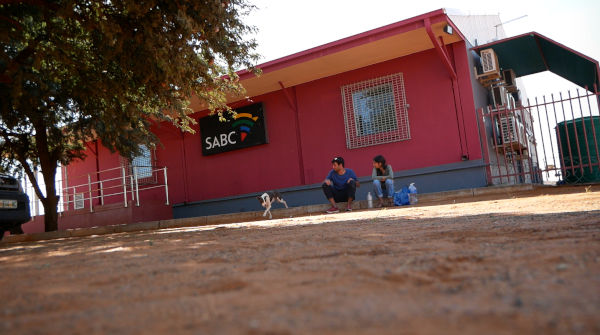
Fieldwork: studying limits of the community-based approach to management at Wildebeest Kuil
(South Africa: 2 March – 28 May 2022)
Hugo spent three months in South Africa, shared between a slow itinerancy to apprehend the actuality of the South African society, situated studies, meetings, discussions, participation and data collection, between Kimberley, Cape Town and Johannesburg and writing and discussions/reflections.
Master 2, Geography & Mountains, Université Savoie Mont Blanc
Heritage in translation. Past and present perspectives on the making of rock art heritage in Namibia
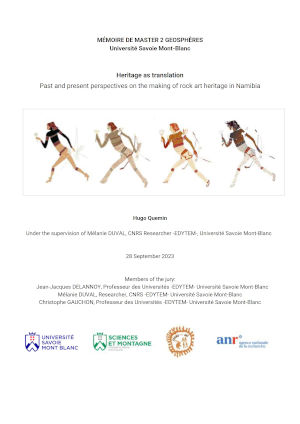
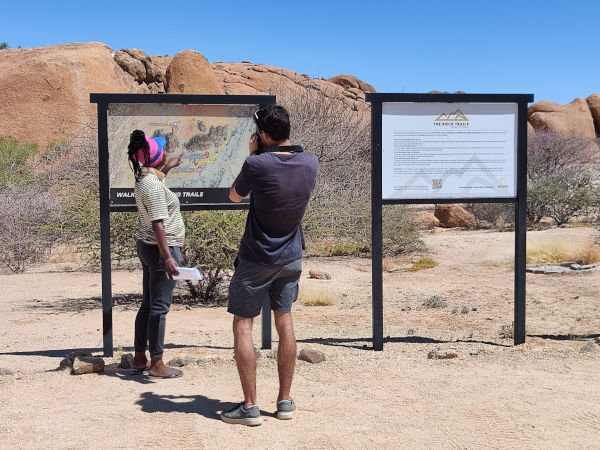
This research, which includes six weeks of fieldwork in Namibia, looks into the issues and socio-spatial effects of heritage-making of rock art sites in the Erongo Mountains. Preparing the ground for a comparative approach between the Namibian and South African (Wildebeest Kuil) fieldworks, it builds on the previous work carried out at Wildebeest Kuil in 2022. At the crossroads of human geography and legal anthropology, this research investigates the connections between values and heritagity – between correspondences and contradictions, similarities and contrasts, conjunctions and disjunctions. This input from values sets the background for an analysis of the valorisation and preservation issues of rock art sites from a perspective little explored within heritage studies: the construction of a legitimacy on and through heritage. While highlighting the valorisation/preservation of rock art sites as a finality implying the legitimacy of action of different actors (in order to justify their actions with regard to the management criteria of rock art sites), this study however mainly tackles the valorisation/preservation initiatives as a means, for different actors, to constitute their legitimacy in a range of other legal domains.
Dedicated to the analysis of the heritagity of rock art sites and the issues that revolve around them, this research pursues the methodology developed by Boltanski and Thévenot (1991) which proposes the pragmatic analysis of inter-individual relations as regular trials between different models of justice. As their approach is deeply rooted in a European framework, it needs to be extended to social contexts where territories do not harbor a common ontological matrix. The Erongo Mountains are a place of interaction between people with different conceptions of what ‘justice’ refers to. By adapting Boltanski and Thévenot‘s approach to this territory, this research fully integrates the issues raised by postcolonial studies by extending the understanding of interactions bridging, through a shared material, different horizons of justice.
The rock art sites of the Erongo Mountains are thus analysed as vectors of multiple interactions and justifications underpinning a set of considerations of justice whose common grammar, in this place where worlds intersect, remains to be studied.

Fieldwork: excavation in the Erongo
(Namibia: 3 – 13 October 2022)
Hugo spent ten days participating in an archaeological excavation on Omandumba West Farm in the Erongo Mountains (Namibia), as part of a team led by David Pleurdeau (MNHM). During this time, he met with some of the actors and partners working on this field or in southern Africa and prepared his return to Namibia planned for the following year.

Fieldwork: Heritage values and constructed issues in Namibia
(Namibia: 21 March – 4 May 2023)
During this fieldwork Hugo looked into the connections between small-scale mining activities and policies for the preservation and promotion of rock art sites in the Erongo Mountains and at Spitzkoppe. Interviews were therefore conducted with various actors (institutions, farmers, guides, archaeologists…) and were complemented by informal discussions (inhabitants of Spitzkoppe and the Okombahe community).
Later, Hugo also spent four days in the national archives in Windhoek, a time that allowed him to acquire important information, such as the history of rock art site preservation in Namibia.
During this time in Namibia Hugo also further developed his PhD project by completing the initial overview from October 2022.
PhD, Geography, Cultures – Societies – Territories, Université Savoie Mont Blanc
Rock art in translation. Politics and discourses of Southern African rock art, and the everyday geography-making

This doctoral research investigates the spatialisation of rock art as a specific geographical entity. In many ways, ‘rock art’ is an elusive concept: its boundaries are blurred, both in terms of spatiality and in terms of understanding and extension. At the same time, its elusiveness generates an ambivalent aura that conditions individuals to imagine that they share a common living context, but also a common type of relationship to rock art. In order to shed light on the variety of relationships to these objects/places, I propose to study both the geographical contexts in which past archaeological knowledge was produced and the situated nature of the various relationships to rock art in the ethnographic present. This reflection will be based on three main sites: Wildebeest Kuil in South Africa, the Erongo Mountains in Namibia, and the Spitzkoppe in Namibia.
The main aim of this research is to analyse, in these three places, the influence of the geographical context on past and present ways of designating, spatialising, giving meaning to, interacting with, negotiating, claiming – in a word, translating – rock art. I therefore propose to observe both the effect of socio-geographical contexts on the ways in which rock art is translated, and the relationships between these translations and the spatialisations of rock art. I am therefore studying the socio-spatial configurations through which certain specific discourses (conservationist, ethno-archaeological, biographical, etc.) become tools in a given geographical context. Thus, at a time when rock art is increasingly proving to be a fundamental tool in the construction of postcolonial subjectivities, this research aims to study the political and spatial dimensions of the translation processes that underlie and shape different relationships to rock art.
Hugo’s scientific publications:
- Hugo Quemin, Mélanie Duval, Romain Lahaye (2025). Claiming rock art, claiming indigeneity: Spaces and scales of recognition in Khoe and San identity claims, Journal of Social Archaeology, 25(1), 25-47. DOI: 10.1177/14696053241289909
- Hugo Quemin, Mélanie Duval, David Morris, Lourenço Pinto (2023), Exploring Multiple Conditions of Participation on Community-based Heritage Management: A Case Study of Wildebeest Kuil Rock Art Tourism Centre, South Africa, Public Archaeology, 22(1), 35-59. DOI: 10.1080/14655187.2024.2355787
- Le Fermier, le Mineur et l’État. Un western namibien moderne, Underground resources under pressure: protection and extraction in mountain areas, Université Savoie Mont-Blanc, Le-Bourget-du-Lac (France), October 10th, 2024.
- « We just need to locate the Geopark » Analysis of the Role of Mining Activities within a Protected Area (The Gondwana Geopark Project, Namibia), Underground resources under pressure: protection and extraction in mountain areas, Université Savoie Mont-Blanc, Le-Bourget-du-Lac (France), October 10th, 2024.
- In search of an idea. What is ‘community’ in ‘community-based management’ and how to improve our understanding of it for the sake of sustainable management? !Xun, Khwe and Wildebeest Kuil rock art site, ASAPA 2024 biennal meeting, 24-28 June 2024, Maseru (Lesotho)
- What does a photovoice project contribute to the analysis of heritage management ?
A critical analysis of the ‘Places in Me’ project with the Khwe and !Xun communities in Platfontein, ASAPA 2024 biennal meeting, 24-28 June 2024, Maseru (Lesotho) - Uses and abuses of ‘community’. Lessons from Wildebeest Kuil Rock Art Tourism Centre, Workshop: Co-working on heritage issues with local communities, IFAS-Recherche, Johannesburg (South Africa), 12 March 2024
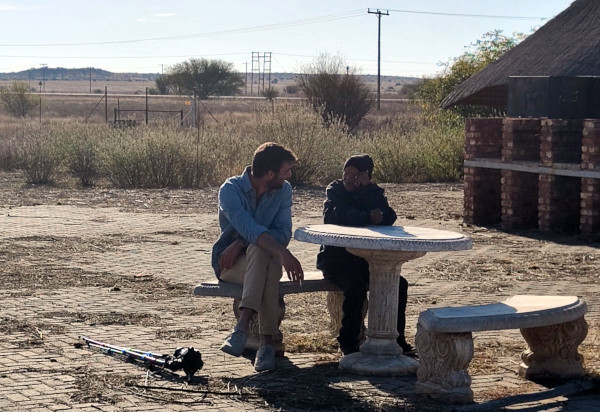
Fieldwork: Photovoice exhibition and heritage issues
(South Africa: 25 June – 8 July 2023)
The aim of this fieldwork was to strengthen collaboration with the !Xun and Khwe communities in Platfontein, with the opening of the « Places in Me » exhibition. The exhibition featured photographs taken by young people from these communities, illustrating their experiences and perceptions of heritage in their environment.
As part of the group involved in putting together the exhibition, I mainly helped with the planning and preparation of the exhibition in collaboration with local NPOs SANCD and SASDO. This included meetings to coordinate the organisation, printing and distributing posters in Platfontein, and recording videos to document the project. During the two openings, I worked with Lucas Bruchet to make a short documentary film about the photovoice project and the exhibition. I was also involved in organising a heritage day for people from both communities. Held at the Wildebeest Kuil site, the heritage day was divided into two parts: a visit to the Wildebeest Kuil site followed by group work. During this second phase, the groups worked on what heritage meant to them and a collective report was produced.
This thirteen-day assignment cemented my relationships with the communities and also enabled me to acquire skills in audiovisual documentation that will be useful for the rest of my dissertation. The stay also enriched my knowledge of heritage issues and community involvement in Platfontein, which will be key elements of my doctoral research in the years to come.

Fieldwork: Co-creating with communities
(South Africa: 10 – 27 March 2024)
The archival work at the Sol Plaatje Museum, the Africana Library and the McGregor Museum took an unexpected place during these two weeks of fieldwork, with an unexpected wealth of data in these places that is not referenced in any database, either locally or on the internet. It allowed us to get our hands on valuable documents, both on the history of local and regional archaeological research, with many documents also covering Namibia. This research will prove invaluable to the dissertation through the acquisition of scientific articles, documents or handwritten correspondence that are not digitally available. On this basis, many considerations could be developed, in particular to better understand the history of archaeology in southern Africa, as well as the way in which rock art sites have been the object of attention and then protected since the beginning of the 20th century.




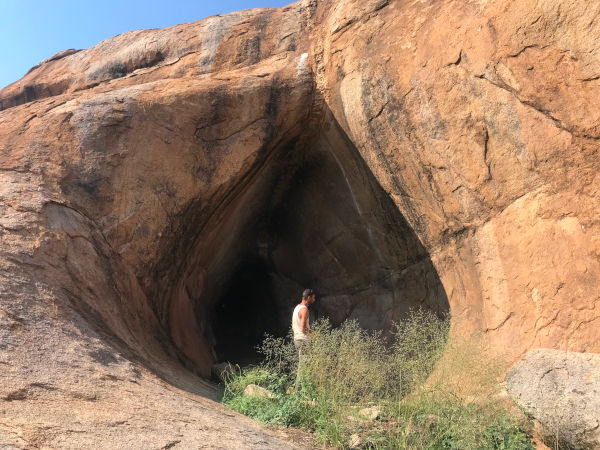

Fieldwork: Rock art heritage tourism in the Erongo Mountains
(Namibia: 22 April – 8 May 2024)
22 – 23 April: Windhoek
During these two days, the work carried out as a duo was concentrated around informal meetings with different representatives of local institutions, as well as the organisation and collection of the material necessary for the smooth running of the days to come.
23 – 29 April: Erongo Mountains & Spitzkoppe
For six days, it was possible to be based on the Omandumba West farm to investigate the functioning of the San Living Museum located on the edges of the farm. The days were therefore punctuated as follows:
- meeting with farmers and/or farm managers nearby, in order to better understand the deployment of the tourist offer, as well as its radius of attraction;
- meeting with the people in charge of an association in the Erongo Mountains, with in-depth examination of the questions and data acquired the previous year. The focus was on the means currently being considered to regulate, on a mountain scale, the tourist activity generated by the San Living Museum;
- travel with visitors coming to the Living Museum, tour operators or individual groups, in order to better understand the motivations of visitors to experience this offer. This also made it possible to see potential speech modulations depending on the profiles of the interlocutors;
- interviews with individuals involved in the establishment of this Living Museum, institutions, NGOs and farmers;
- analysis of other Living Museum type offers, in order to compare the organizational methods of these tourist offers and better situate the specificities of the San Living Museum of Omandumba West.
This first week in the field made it possible to consolidate the collection of data at various levels and to develop certain analyses begun during two previous field sessions in October 2022 and March-April 2023.
30 April – 8 May: Brandberg Mountains
With the arrival of three additional colleagues, the five of us travelled for nine days through the northern, western and southern parts of the Brandberg Massif. The aim of this trip, which was interrupted by stops at various locations, was to carry out reconnaissance work with the aim of understanding the current construction project of Namibia’s first GEOPARK. Several of these sites were visited during these nine days: Brandberg; Twyfelfontein; Burnt Mountain; Petrified Forest; Brandberg West Mine; Goboboseb Mountains; Messum Crater; Uis.
We also used this time to work on the small-mining issues. We stopped several days in Xoboxobos, a small village populated exclusively by individual miners, installed in the foothills of the Goboboseb Mountains. Coming to try their luck in the sedimentary layers, they dig in search of amethyst crystals that they can sell to the highest bidder. Our on-site activity, spread over three days, had the main objective of better understanding the history of this village, the working methods of these ‘small independent miners’, the framework for the marketing of stones, as well as the specific relationships that are woven between buyers and their sellers.

Fieldwork: Co-creating with communities: the 2025 RAHMSA workshop
(South Africa: 24 June – 1 July 2024)
Thanks to additional funding from the 2024 CNRS Call « Science and/or society » Hugo spent one week in Platfontein to continue and deepen the collaborative dynamics initiated with the local NPOs SANCD and SASDO, and colleagues from the Sol Plaatje University.
Participatory workshops with members of the Khwe and !Xun communities were organised as well as meetings with the two NPOs and Sol Plaatje’s colleagues to prepare the organisation of an IRN RAHMSA workshop to be held in March 2025.
